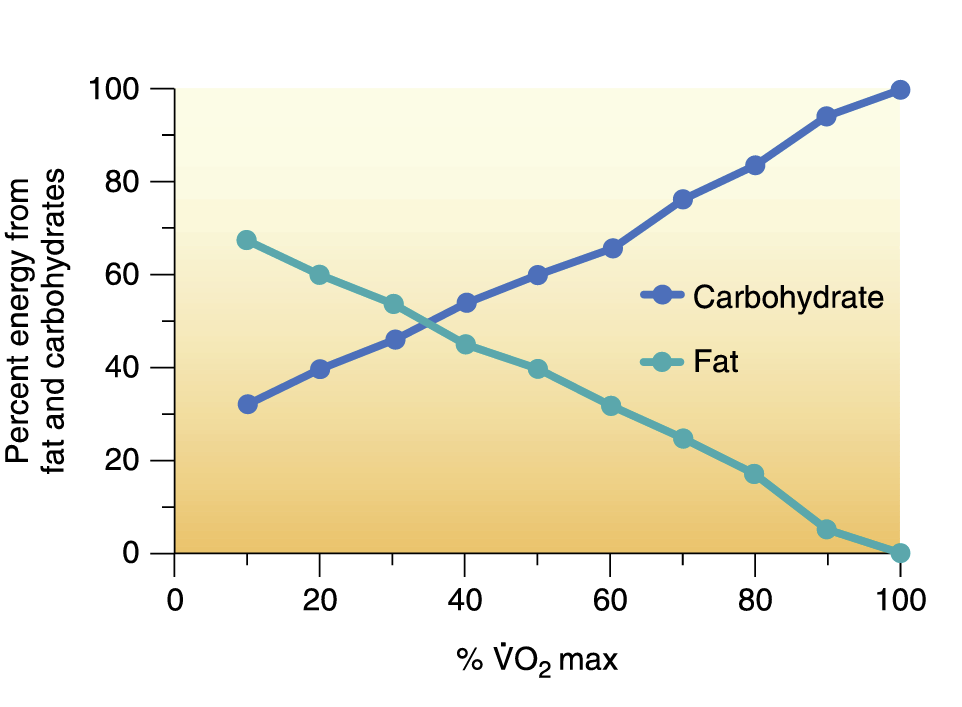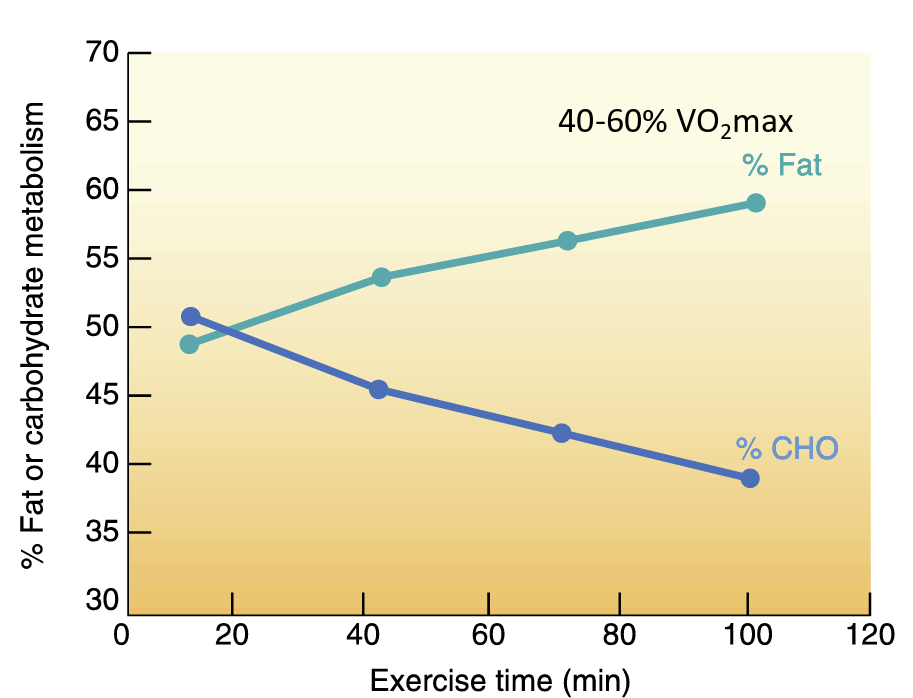Lecture Notes
Lecture 1: Bioenergetics
What is ATP?
ATP (Adenosine triphosphate): Composed of adenine, ribose, and three linked phosphates.
Synthesis: ADP + Pi → ATP
Breakdown: ATP → ADP + Pi + Energy (via ATPase)
Usage Rate: Each human cell uses ~10 million ATP/second (~1-2 billion/minute).
Importance of ATP
Gibbs Free Energy (∆G): ∆G = total free energy of products – total free energy of reactants.
Macromolecules for ATP Production: Primarily carbohydrates, alongside fats and proteins.
Pathways for ATP Production
1. Anaerobic Glycolytic ATP Production
Efficiency: 1 glucose → 2 ATP (6-7%).
NAD Recycling: Important in Anaerobic Glycolysis.
Lactic Acid Processing: Key concept to understand.
2. Aerobic Catabolic ATP Production
Efficiency: 1 glucose → 30-33 ATP (34%).
High Energy Phosphagens: Utilized without glucose/O2 for muscle contraction; excess ATP stored at rest.
3. Lactate as a Fuel Source
Cori Cycle: Lactate Shuffle for energy production.
Enzymatic Role: Facilitate oxidation-reduction reactions.
Metabolic Rate
Definition: Total cellular reactions of synthesis and breakdown.
Electron Transport Chain: Oxygen is essential for aerobic energy production.
Efficiency Metrics: 34% efficiency per CH2O (4.2 kcal/g) or fat (9.4 kcal/g).
Potential Energy: 1 mole of glucose = 686 kcal/mole → yields 32 moles of ATP (7.3 kcal each).
Lecture 2: Muscle and Nervous System
Muscle Fiber Types
Classification: Biochemical, anatomical, and physiological differences.
Mitochondria and Fiber Size: Vary between Slow Oxidative (SO), Fast Glycolytic (FG), and Fast Oxidative Glycolytic (FOG) fibers.
Variability and Adaptation of Muscle Fibers
Genetic Determination: All muscles have genes for each type of myosin.
Fiber Type Changes: Possible through resistance and endurance training, but duration and difficulty vary.
Resistance training leads to Type I (SO) to Type II (FG) switch in ~2 months.
Endurance training leads to Type II (FG) to Type I (SO) switch in 2-6 months.
Motor Units and Recruitment
Motor Units: Composed of various independent fibers. Recruitment goes from Slow Twitch to Fast Twitch based on movement demand.
Neural Activation: Not all motor units are activated simultaneously; differential activation plays a role in movement control.
Lecture 3: Fuel Nutrition
Heat and Exercise
Body Heat Production: Related to exercise intensity and physiological responses.
Precooling Impact: Can optimize endurance performance; mechanisms of cooling methods (e.g., slushies vs. cold compresses).
Heat Stroke Susceptibility: Three factors influencing individual responses.
Hydration and Thirst
Changing Hydration Guidelines: Evolution of recommendations affecting performance.
Thirst vs. Dehydration: Investigating performance implications.
Carbohydrate and Performance
Glycogen Influence: Duration of exercise affects reliance on muscle glycogen; ingesting carbohydrates can delay fatigue.
Energy Drinks: Role in improving performance via glucose and fructose mix.
Lecture 4: Fatigue and Factors Affecting Performance
Types of Fatigue
Central vs. Peripheral Fatigue: CNS accounts for 10-15%, while peripheral factors mainly contribute to fatigue.
Mechanical Factors: Include sarcomere structural arrangements, Ca²+ availability, and ATP's role.
Fatigue Experiments
Experimental Models: Understand trade-offs in methodologies (e.g., in vivo, isolated muscle).
Inducers of Peripheral Fatigue
High [H+]: Can reduce force and maximal shortening velocity.
Free Radicals: Affect actin and myosin efficiency, impacting overall fatigue.
ATP Energetics: ATP levels remain relatively stable during exercise, with specific reactions stimulating glycolysis.
Summary of Performance Factors
Tailoring Factors: Variation in performance for different exercise types and durations.
Central vs. Peripheral Fatigue: Ongoing research exploring their respective impacts.
Overtraining Symptoms: Can significantly affect performance, mood, appetite, and exertion level.


